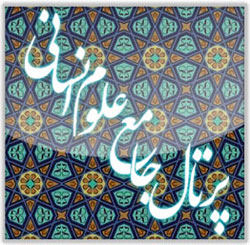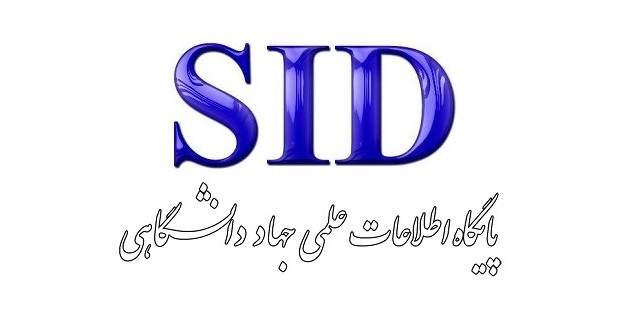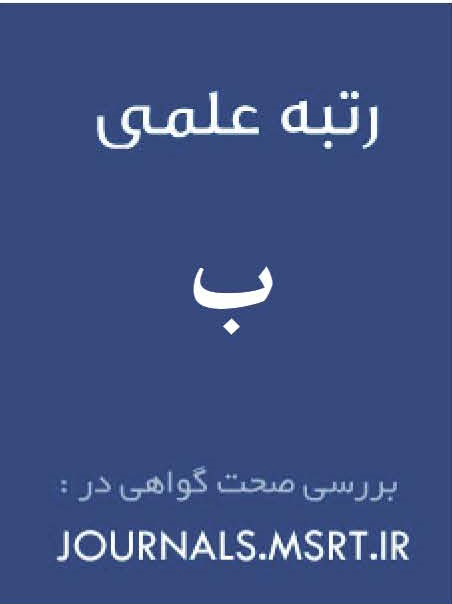چالشهای تکوین سرمایه فرهنگی از منظر قرآن و حدیث
کلمات کلیدی:
سرمایه فرهنگی, چالش های فرهنگی, قرآن و حدیث, اخلاق اسلامیچکیده
توسعه و تقویت سرمایه فرهنگی در کشورهای اسلامی وادغام اصول اساسی آن در چارچوبهای آموزشی و اجتماعی مدرن امروزی دارای پیچیدگیهای خاصی است که میتواند با چالشهای گوناگونی روبرو باشد که بایستی مورد شناسایی و تحلیل گردند. از اینرو در این پژوهش با یک مطالعه به روش کتابخانهای واستفاده از یک رویکرد پژوهشی توصیفی-استنباطی، به تحلیل محتوای کیفی آیات قرآن و احادیث با رویکرد تفسیر موضوعی پرداخته شده و این چالشها از دیدگاه آیات قرآنی و احادیث مورد شناسایی قرار گرفت. نتایج این مطالعه نشان میدهد که مهمترین چالش و مانع تکوین سرمایه فرهنگی در جوامع اسلامی، در چهار حوزهی معرفتی-فکری (مانند تعطیلی عقل و استبداد فکری)، ارزشی-اخلاقی (نظیر نفاق و کفر)، اجتماعی (از جمله تحریف تاریخ و ترویج الگوهای ناشایست) و فکری-اعتقادی (سطحینگری در فهم دین) ریشه دارد. این چالشها نه تنها اصالت فرهنگی را تهدید میکنند، بلکه جامعه را از دستیابی به الگوی تمدنیِ مبتنی بر هدایت الهی بازمیدارند. این چالشها میتواند با آموزههای قرآنی و حدیثی نظیر: تقویت دانش و معرفت دینی، تقویت اخلاق اجتماعی، بهرهگیری از الگوهای الهی و تربیتی، مبارزه با انحصارطلبی فرهنگی و نهایتاً امر به معروف و نهی از منکر، مرتفع گردد. محوریت این راهکارها بر تقوا، عدالت، و مسئولیتپذیری جمعی استوار است که در تقابل با رویکردهای سکولار، فرهنگ و سرمایه فرهنگی را نه ابزاری برای قدرتطلبی، بلکه مسیری برای تقرب به خدا و تحقق جامعهای عادلانه تعریف میکند.
دانلودها
مراجع
Allport, G. W. (1961). Pattern and Growth in Personality. New York, NY: Holt, Rinehart & Winston. https://ia601408.us.archive.org/30/items/in.ernet.dli.2015.199562/2015.199562.Pattern-And-Growth-In-Personality_text.pdf
Bugental, J. F. T. (1965). The Search for Authenticity: An Existential-Analytic Approach to Psychotherapy. New York, NY: Holt, Rinehart & Winston. https://a.co/d/4cz3O4L
Bugental, J. F. T., Schneider, K. J., & Pierson, J. F. (2014). The Handbook of Humanistic Psychology: Theory, Research, and Practice. California: SAGE Publications. https://doi.org/https://doi.org/10.4135/9781483387864
Darabi, J. (2018). Theories of personality psychology (Comparative approach). Tehran: Ayij Publishing.
Deci, E. L., & Ryan, R. M. (1980). Self-determination Theory: When Mind Mediates Behavior. The Journal of Mind and Behavior, 1(1), 33-43. https://www.jstor.org/stable/43852807
Feast, G. J., Roberts, T., & Face, J. (2012). Theories of personality. Tehran: Ravan Publishing.
Frankl, V. E. (1984). Man's Search for Meaning: An Introduction to Logotherapy. California: Touchstone. https://a.co/d/7QFIZ1c
Ibn Manzur, M. b. M. (1993). Lisan al-Arab (Vol. 2). Beirut: Dar al-Sader.
Kamalvand, P., & Mohammad Ali Nejad, R. (2016). Comparative conceptualization of self-esteem in the Quran and humanistic psychology. Journal of Counseling and Psychotherapy Culture, 7(27), 1-32.
Makarem Shirazi, N. (1995). Tafsir-e Namuneh (Vol. 14). Tehran: Dar al-Kutub al-Islamiyyah.
Maslow, A. H. (1968). Toward a psychology of being. New York: Insight Books; D. Van Nostrand Company. https://archive.org/details/towardpsychology1968masl/page/n8/mode/1up
Maslow, A. H. (1987). Motivation and personality. Longman Publishers. https://a.co/d/4FlO206
Maslow, A. H. (1993). The Farther Reaches of Human Nature. Louisiana: Arkana. https://a.co/d/fys7dNN
Miri, S. M. H., & Khademi Afzal, F. (2018). An examination and critique of Abraham Maslow's view on self-actualization with an emphasis on Islamic sources. Journal of Comparative Exegesis Studies, 4(7), 57-78.
Noorbala, A. A. (2011). Mental-social health and strategies for improvement. Iranian Journal of Psychiatry and Clinical Psychology, 17(2), 151-156.
Pourafkari, N. (2003). Comprehensive dictionary of psychology and psychiatry and related fields. Tehran: Contemporary Culture Publishing.
Raghib Isfahani, H. b. M. (1993). Al-Mufradat fi Gharib al-Quran. Damascus, Beirut: Dar al-Qalam.
Rogers, C. R. (1995a). On Becoming a Person: A Therapist's View of Psychotherapy. California: HarperOne. https://a.co/d/cArrBd8
Rogers, C. R. (1995b). A Way of Being. California: HarperOne. https://a.co/d/78G7jj7
Rosenberg, M., & Owen, J. (2020). Self-esteem and its role in resilience. London: Sage Publications.
Schultz, D. P., & Schultz, S. E. (2012). Theories of personality. Tehran: Virayesh Publishing.
Smith, E. R., & Mackie, D. M. (2021). Social psychology. New York: Psychology Press.
Snyder, C. R., & Lopez, S. J. (2014). Positive Psychology: The Scientific and Practical Explorations of Human Strengths. New York: SAGE Publications. https://a.co/d/30RzFhv
Tabatabai, M. H. (1997). Al-Mizan (Vol. 6). Qom: Dar al-Ilm.
Veysi, O., Amiri, M., & Mohammadi, M. (2021). A comparative study of the concept of mental health from the perspective of Islam and modern psychology. Journal of New Advances in Psychology, 4(40), 23-45.
Al-Kulayni, M. b. Y. (1986). Al-Kafi (Vol. 2). Tehran: Dar al-Kutub al-Islamiyyah.
Bahrami, M. (2025). Examining the relationship between religion and culture from the perspective of the Quran. Quranic Research(54 & 55), [No page numbers], Article Special Issue on the Quran and Cultural Engineering.
Bsoul, L. A. (2024). Obstacles to sustainable development in the Islamic world. Invest Journal of Sharia & Economic Law, 4(1), 120-156. https://doi.org/https://doi.org/10.21154/invest.v4i1.8961
Bukhari, M. b. I., & Noor Ahari, A. Sahih al-Bukhari (Vol. 4). Tehran: Sheikh al-Islam Ahmad Jam Publishing.
Chalabi, M. (2003). Sociology of order: Explanation and analysis of social order theory. Tehran: Ney Publishing.
Farhadi, R. H. (2019). Reflections on cultural engineering. Supreme Council of the Cultural Revolution.
Fathi, I., & Dehghanpour Farashah, T. (2020). A comparative study of the concept of cultural capital in Bourdieu's theory and religious teachings. Quarterly Journal of Religion and Cultural Policy, 7(1), 165-212.
Gozali, A. (2023). Multicultural Education in the perspective of the Qur'an and Hadith: Concepts and Implementation. https://doi.org/https://doi.org/10.21070/pedagogia.v13i1.1570
Hasanzadeh, A., & Qasemi, V. (2016). Construction, design, and calibration of a model and provision of instruments for measuring cultural capital. Iranian Sociological Journal, 16(1 & 2), 64-73.
Heydari, M. (2022). Hajj as the cultural capital of the Islamic world. Miqat Hajj Quarterly, 31(122), 7-28.
Ibn Babuyah, M. b. A. (1994). Man la yahduruhu al-faqih. Qom: Islamic Publications Office affiliated with the Society of Teachers of Qom Seminary.
Mahdipur, M. (2008). Cultural capital. Mobalaghin Quarterly(102).
Majlisi, M. B. (1936). Bihar al-Anwar al-Jami'a li-Durar Akhbar al-A'immah al-Athar. Beirut: Dar al-Kutub al-Islamiyyah.
Miri, S. M. (2014). Sources of transcendent culture from the perspective of the Holy Quran. Siraj Munir, 4(12), 36-68.
Mohammadi Ray Shahr, M. (1983). Mizan al-Hikmah (Vol. 3). Qom: Islamic Propagation Office.
Pahlavan, C. (2003). Cultural studies: Discussions on culture and civilization. Tehran: Ghatreh Publishing.
Pourzarayan, N. (2010). An investigation of the economic and cultural status of young families in relation to their cultural and social capital (A case study in Tabriz) Faculty of Social Sciences, Allameh Tabatabai University].
Qasemi, M. A. (2005). Cultural decline in the mirror of the Quran. Ravaq Andisheh(42), 95-117.
Rouhani, H. (2009). An introduction to the theory of cultural capital. Strategic Quarterly, 18(53), 35-37.
Salehi Amiri, S. R. (2007). Cultural concepts and theories. Tehran: Qoqnos Publishing.
Salehi, S. A. (2004). Quranic culture in Islamic Iran. Quranic Research Quarterly(39 & 40), Article Special Issue on the Ten-Year Index.
Surudin, Y. (2024). Pendidikan Karakter dalam Islam Perspektif Al-Qur'an dan Hadits. Religion, Education, and Social Laa Roiba Journal (RESLAJ). https://doi.org/https://doi.org/10.47467/reslaj.v6i5.1250
Tabatabai Borujerdi, H. (1989). Jami' Ahadith al-Shi'a (Vol. 15). Qom: Mehr Publishing.
Taylor, S. E. (1871). Primitive culture: Researches into the Development of Mythology, philosophy, Religion, Language, Art and Custom (Vol. 1). London: John Murray Ltd.
Williams, R. (1983). Keywords. London: Fontana.
Yenshuireh, K., Fontaine, O., & Katbi, M. (2006). Bourdieu's vocabulary. Tehran: Ney Publishing.
دانلود
چاپ شده
ارسال
بازنگری
پذیرش
شماره
نوع مقاله
مجوز
حق نشر 2025 معرفت و بصیرت اسلامی

این پروژه تحت مجوز بین المللی Creative Commons Attribution-NonCommercial 4.0 می باشد.







